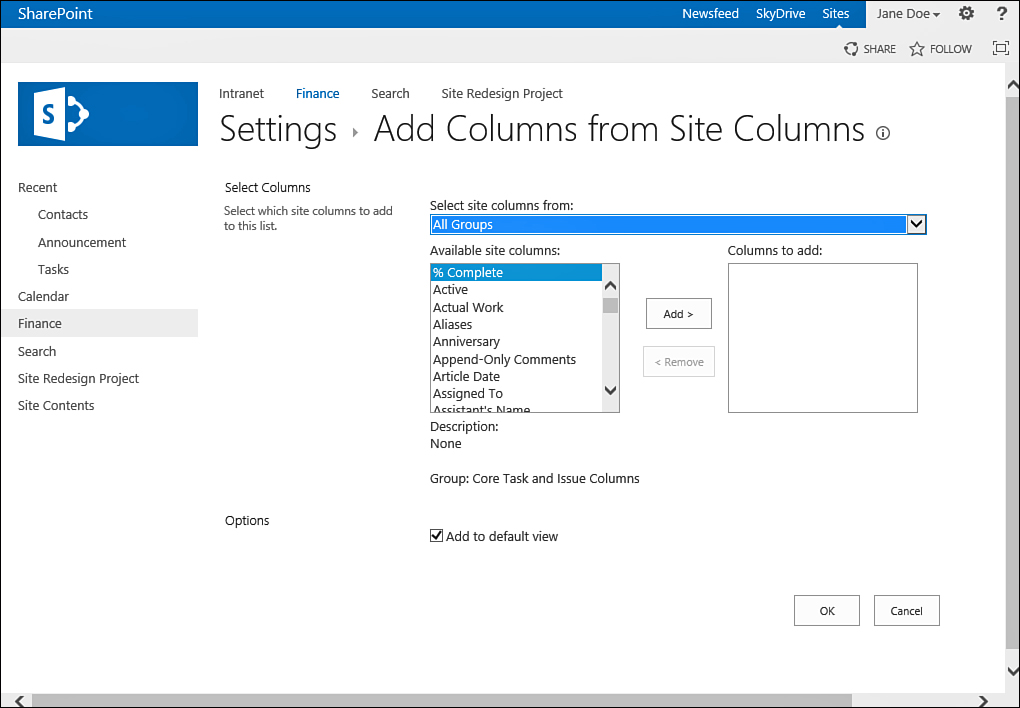1. Add a Site Column to a List or Document Library
Scenario/Problem: You want to add to an existing list or document library an existing site column that has been defined in the site.
Solution: A site column is a column that is defined at the site level rather than
at the list or library level. Reusing those columns in lists and
libraries makes a lot of sense. If a change to the column setting is
required in many lists and libraries, changing the column at the site
level once to update all the lists and libraries using that column is
possible.
If you want to use an existing site column
instead of create a new column, you can open the list’s or library’s
settings page by switching to the List ribbon or Library ribbon and
clicking the List Settings or Library Settings button.
In the list’s or library’s settings page that
opens, you scroll down to the Columns section of the page. Here, you see
the list of all the columns that have been added to the list or
library. In this section, you click the Add from Existing Site Columns
link. This selection opens a page that enables you to choose one or more
site columns to be added to the document library or list (see Figure 1).

FIGURE 1 Choosing site columns for a list or library.
To choose a column, you locate it in the
Available Site Columns box, select it, and click the Add button to add
it to the Columns to Add box. If you regret your choice and want to undo
it, you select the column in the Columns to Add box and click the
Remove button.
To more easily find a column, you can filter
the columns that are in the Available Site Columns box by choosing the
group for the column. Site columns are grouped in logical groups. For
example, the Core Document Columns group holds columns that are commonly
used by most documents: Author, Comments, Date Created, and so on. By
default, you see the site columns from all groups available to you. To
choose a different group, you open the Select Site Columns From
drop-down box and select a different group.
Tip
When adding a site column, you cannot specify
any settings on it because any column settings are defined at the site
level. However, after adding the column, you can modify it as you would
any other column.
2. Choose a Default Value for a Column
Scenario/Problem:
You want to define a default value for an existing or new column in a
library or list. For example, in some instances, you want date columns
to default to the current day’s date or text columns to default to the
current user’s name; or for choice columns, where the user can choose
from multiple choices, you might want to select one of the choices as
the default.
Solution:
Some types of columns can have default values. Default values appear in
the column when a user is creating a new list item or is uploading a
new file, but the user can choose to change the value.
Some column types allow more advanced settings
for default values than others.
3. Enforce Unique Values on a Column
Scenario/Problem:
You want to make sure no two list items in a list or library have the
same value in a column. For example, you want to make sure no two files
have the same title or no two tasks have the same title.
Solution: The option to enforce unique values is available for some column types ,
including the single line of text, number, choice, and lookup.
Selecting Yes in this option tells SharePoint to make sure that users do
not enter the same value in two different list items.